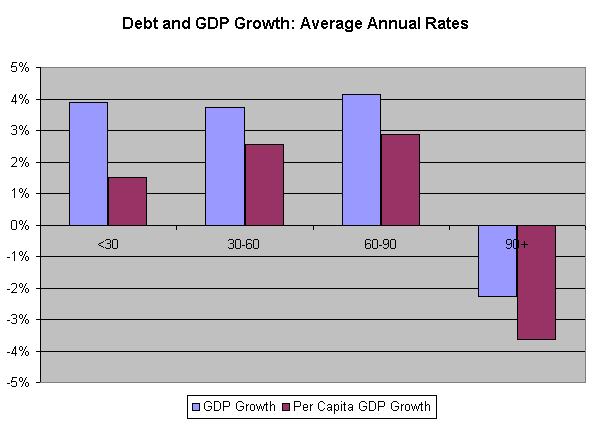Our friends at the Economic Policy Institute have already done a pretty good job burying the claim from Reinhart-Rogoff that high ratios of debt to GDP will lead to lower growth, but in DC, no bad theory stays dead for long. With that in mind, let’s throw a little more dirt on the grave.
The Reinhart-Rogoff analysis is conducted entirely in terms of GDP growth. Back in the old days, economists used to focus on per capita GDP. The idea being that what mattered is output relative to the population. The people of Denmark are much richer on average than people in China even though China’s GDP is more than 20 times higher. The reason is that China’s population is more than 200 times as large as Denmark’s.
As many critics of R&R have noted, their sample of developed countries with high debt to GDP ratios is very small. Many of the obvious cases (e.g. Japan in the 90s and the 00s) can be readily explained as countries where slow growth led to high debt to GDP ratios. However, in many of the cases, such as Japan and Italy in recent years, the high debt countries are also countries with little or no population growth.
This means that we would expect a slower rate of GDP growth, other things equal. While there is undoubtedly some endogeneity to population growth (e.g. higher GDP growth leads to more immigration), we should still expect the benefits of growth to show up in higher per capita income.
If we adjust the U.S. data for population growth, we find that higher debt levels are associated with higher rates of per capita GDP growth, except for the six high debt years following World War II, when the country was demobilizing from the war. If R&R make their data available we can see what the per capita growth numbers look like in other highly-indebted countries.
Dean Baker is the co-director of the Center for Economic and Policy Research (CEPR). He is the author of False Profits: Recovering from the Bubble Economy. He also has a blog Beat the Press, where he discusses the media’s coverage of economic issues. This article was first published in the CEPR blog on 30 July 2010 under a Creative Commons license.
| Print

